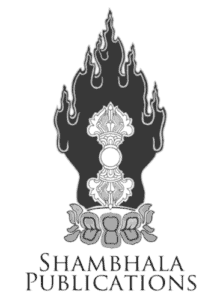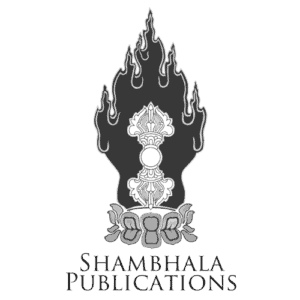“… The mind becomes still as we are no longer agitating the mind with habitual reactivity to the present moment. With this clarity and stillness, we are more able to see that in every moment there is a choice for us to not perpetuate the habit of suffering. …” ~ Rebecca Li
Our subscriber community and regular site visitors know that a pause period was triggered for us back in Sep ’23 … and it had to be further extended until July – as noted in our May 9th newsletter. We mention this fact because these last many months have underscored the power of simply being present to what IS here – as “fully” as possible and without any “judgment or assessment” … meeting every day with this principle made it possible for us to navigate the “turbulent waters” with balance and equanimity – of course, inevitably we did “fall down” at times 🙂 …
So … it seems most apropos that we “resume” our new content publishing with a teaching that has this principle at its core, i.e., the Chan practice (from Chinese Buddhism) of Silent Illumination :
“… The practice is to cultivate clarity and discernment to see how our entrenched habits of reactivity cause suffering and choose not to perpetuate these unhelpful habits. … moment after moment they are cultivating clear awareness, directly experiencing everything as it is regardless of how challenging it might be …”
“… when you practice Silent Illumination, you … let through, let be, let go …”
…. as noted by Rebecca Li, in her recent book, Illumination: A Guide To The Buddhist Method Of No-Method …
In this book, Rebecca sets the stage with her personal encounters with Master Sheng Yen (her root teacher – who popularized Chan, in the West, in the 70s) … and a Western teacher John Crook (who had been given Dharma transmission by Master Sheng) … and then takes us on a deep dive into Silent Illumination …
Her closing in the Introduction serves as an excellent “lens” into – and the essence of – the practice … and the ultimate gift of the book:
“… the beauty of Chan is that because it is a formless practice, I do not have to refrain from activities like maintaining close ties with family or pursuing a professional career. Living in the world, I have access to and understanding of challenges like emotional relationships, political divisiveness, sexuality, ambition, oppression, and money worries. As a lineage holder yet a lay teacher, my family and my job are not a distraction from practice but rather integral to it. Life does not get in the way; it is the way.
Silent Illumination is a perfect vehicle for realizing this … Wherever you are and whatever you are doing, you can engage in this method of no-method because, as I’ll show you in this book, during all of these moments you can uncover deep insight about your mind, yourself, the reality around us, and the true nature of the world …”
The book, of course, is the “full recipe” : the practice, the challenges therein, and the ultimate “rewards or gems” … but … our purpose in this post is to offer a sufficiently depthful mini-preview … so in that spirit we offer a segment What Happens When We Start Seeing Clearly (from the chapter Allowing What Is And Being Fully Here) … as it is the key question of interest (i.e., the ultimate “fruit” of the practice) to the potential reader/practitioner …
Rebecca’s answer in this segment is : Chan practice – through Silent Illumination – lets us recognize our unhelpful habits by gradually cultivating total clear awareness. As the mind settles, we realize the true nature of thoughts as transient & unreal, gain insight into our desires, and unlearn reactive behaviors that cause suffering. This lifelong process empowers us to choose compassion and wisdom instead of suffering …
You can read the full Introduction – accessible via the Look Inside link on its Shambhala page.
This post is part of our ongoing Shambhala Publications series that offers substantive previews of selections from Shambhala Publications new and classic titles …
All italicized text here is adapted from Illumination: A Guide to the Buddhist Method of No-Method by Rebecca Li, © 2023 by Rebecca Li. Reprinted in arrangement with Shambhala Publications, Inc. Boulder, CO.
You can purchase the book at Shambhala Publications or Amazon.
What Happens When We Start Seeing Clearly?
In the initial phase of our practice, we may notice that we have reacted with our unhelpful habits but are unable to see how it happened. With the cultivation of total clear awareness in Silent Illumination, as the mind settles, we can see more clearly how these habits emerge and unfold thought after thought. We gain insight into our desires and how they compel us to activate the various unhelpful modes of operation in reaction to the emerging present moment. We can see directly for ourselves how each thought is conditioned by another because we see each thought as it is, nothing but thoughts, as temporary as clouds and lightning in the sky, soap bubbles or shadow—they are without inherent and independent existence. In this way we cultivate insight into the true nature of existence, that each moment is the coming together of causes and conditions that are constantly changing.
Remember what John Crook often said: “Chan is not supposed to be comfortable.” Indeed. Seeing all the ways in which we cause suffering for ourselves and others is difficult and challenging. You should give yourself credit for persevering, even if you need to take breaks from time to time. Many people get too disturbed by the discomfort and quit, often because they only focus on the discomfort and overlook the implications of their discovery. When we can see clearly for ourselves that it is our habitual reactivity to the present moment that causes suffering, it means we are able to unlearn these unhelpful habits. This is incredibly empowering! We no longer need to try to change other people. We can stop giving rise to the vexations we discover. In each moment, we realize we can stop perpetuating any mode of operation that is unfolding and live a fully engaged life without the unhelpful habits of suffering.
Chan practice is a lifelong process as we continuously work with ourselves to clearly see how we generate our own suffering. In the beginning, we are likely to discover the more obvious ways in which we cause suffering for ourselves. At first these are the gross-level vexations like becoming irritated by what is going on or wishing we were somewhere else doing something else. With a little effort, these can be readily recognized. As we practice more and keep penetrating the mind, we become able to see more clearly how these unhelpful habitual tendencies manifest themselves as more subtle thought patterns and ubiquitous beliefs about the world that shape our perception. These beliefs are often deep-rooted, conditioned by the social and cultural environment from which we came and in which we live.
As we make these realizations, John Crook’s instruction to “let through, let be, let go” is worth keeping in mind. As you may recall, “let through” refers to allowing the thoughts that are already in our mind to be there without blocking or fighting against them, which agitates the mind. When the mind is agitated, there is little clarity. Vexations in the form of habitual reactivities are already part of the present moment when they enter our awareness; hating them will not undo them even if we believe otherwise. In our attempt to block vexations from our awareness, not only do we not stop causing suffering, but we also deprive ourselves of the opportunity to see clearly how this habit is operating and obscuring the present moment. When we remember to let be, we allow the vexation, manifesting in an unfolding of thoughts and emotions, to be fully experienced and seen as it is. We are not fueling vexations with more vexations, not reacting to aversion with aversion. When vexations are seen clearly as mere thoughts, even though there is a compulsive quality to them, they lose their power. Like all thoughts, they dissipate and move on, and we let go.
Remember, Master Sheng Yen said that the practice of Silent Illumination is the process of letting go. This phrase is often misunderstood as forcefully eliminating or making thought go away. Rather it is a process of waking up to how we cause suffering by giving rise to these unhelpful habitual tendencies which we believe, misguidedly, will provide what we want. When we see how unhelpful and destructive these habitual tendencies are, and how they get in the way of our being able to fully engage in life, we realize that we no longer have to perpetuate these habitual tendencies. We can allow the emerging present moment to be Silent Illumination.
As we practice this way, the habitual tendency to react to the present moment with various modes of operation is gradually unlearned and released. The mind becomes still as we are no longer agitating the mind with habitual reactivity to the present moment. With this clarity and stillness, we are more able to see that in every moment there is a choice for us to not perpetuate the habit of suffering. We remember to choose not to perpetuate the habit of suffering by not succumbing to these entrenched modes of operation. Not causing suffering is wisdom. With this clarity, we see we are truly interdependent with all sentient beings; benefiting and loving others is no different from benefiting and loving ourselves—and with this wisdom, compassion arises naturally.
~ Rebecca Li
Stay tuned for more substantive previews of other books (both new and classic) in this ongoing Shambhala Publications series …
All italicized text here is adapted from Illumination: A Guide to the Buddhist Method of No-Method by Rebecca Li, © 2023 by Rebecca Li. Reprinted in arrangement with Shambhala Publications, Inc. Boulder, CO.
You can purchase the book at Shambhala Publications or Amazon.
And, may you cultivate … clarity in every moment … and bring balance and curious awareness in your everyday life … and …
May you remain safe and healthy.













